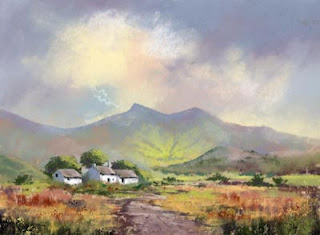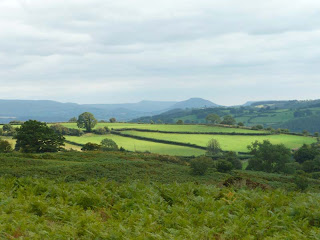Sometimes you may come across a lovely spot to paint, a truly heartening scene, but without an actual focal point. Without that important ingredient it is unlikely to be a great success as a composition, so what do you do? There are a number of answers to this question, and one of my favourites is to add wildlife, usually in a manner that allows the landscape to dominate, unless the wildlife is something iconic such as a polar bear, rhino or similar large creature, but we rarely find any of these around the Brecon Beacons where I do much of my sketching!
While this is only the central part of the watercolour, I have focussed at this point to illustrate how to suggest rapid movement in wildlife by softening off the edges of the birds in places such as the wing-tips, the trailing edges of the wings and the tails, while keeping the beaks and heads in reasonably sharp focus. This was one place where I appreciated having other people and their dogs around, as they caused the birds to fly off in sudden bursts, thus giving me the opportunity to sketch and photograph the action as they flew past.
I shall return to the issue of highlighting and creating centres of interest within a scene in some future blogs, but capturing fleeting moments of wildlife can be an exciting part of our work, even for landscape painters.





